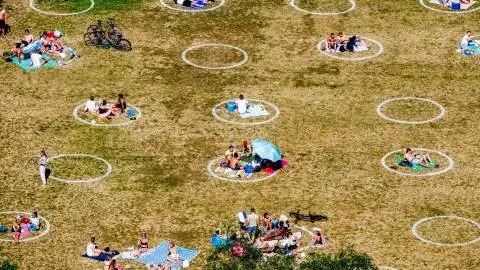August Economic Update: A cruel summer
We've seen historic dismal numbers this quarter, but they are painful illustrations of the costs of a lockdown. In the second half of the year, the shape of the rebound will depend on authorities withstanding local curfews rather than larger-scale lockdowns. Nonetheless, the jury is still out on the long-term and permanent costs of this crisis
It’s a cruel summer.
Back in 1984, Bananarama were singing about hot summer streets, unsuccessful attempts to smile and being left on their own.
A feeling many will have these days when wanderlust has to be subdued and the nearby lake has to make up for a sandy coastal beach. The summer is also cruel as it finally added numbers to the Covid-19 crisis. For most economies, the GDP data for the second quarter followed the pattern of ‘worst quarter since x years for country y’. We only had to fill in the numbers.
In all honesty, as severe as these GDP readings were, they are yesterday’s story. In fact, they are a painful illustration of the costs of a lockdown. The longer and the stricter a lockdown, the more severe was the impact on the economy. This pattern nicely explains the differences across the Eurozone. The (too) early lifting of lockdown measures in the US is also the main reason why the contraction was somewhat less severe than in the Eurozone. At the same time, China’s recovery continued. The fact that Chinese exports in June surprised to the upside could be another sign that the Eurozone and the US are recovering.
Monthly data since May have kept hopes for a v-shaped recovery alive
Looking ahead, monthly data since May have kept hopes for a v-shaped recovery alive. Or let’s better call this a v-shaped rebound. Whether it is the traditional macro indicators or the more experimental data, they have all surged until July. It is now up to the hard data to follow suit. It will take until the hard July data before we really know whether the initial and more mechanical rebound after lifted lockdown measures, will turn into a strong and sustainable recovery or rather a quick flattening out.
Several factors will determine the shape of the recovery in the second half of the year. The experiences of many Asian countries and first European countries show that new outbreaks of the virus cannot be prevented. The only question is whether authorities can withstand local curfews rather than larger-scale lockdowns. Also, the permanent damage of the crisis is still hard to gauge but it is hard to believe that sectors like retail, leisure or tourism have already seen the full and final impact from the crisis on employment. ‘High uncertainty’ will be the key phrase for all forecasters and policymakers. It will take until September before the global economy will get new guidance from macro data, policymakers and politics.
With regards to politics, now that European leaders have shown solidarity and agreed on a historic deal (which will have stronger symbolic than economic impact), financial markets’ focus will probably shift to the US presidential elections. Given the experiences of the last few years, the election campaign alone has the potential of sending some shock waves to the global economy.
Looks as if all of us better fill up the tank to prepare for an action-loaded autumn season. Happy staycation.
Download
Download report
6 August 2020
This cruel summer This bundle contains 8 ArticlesThis publication has been prepared by ING solely for information purposes irrespective of a particular user's means, financial situation or investment objectives. The information does not constitute investment recommendation, and nor is it investment, legal or tax advice or an offer or solicitation to purchase or sell any financial instrument. Read more




